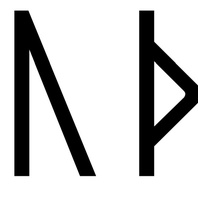
Viking Names
Gyda
Gyða appears early in Norway and is frequent there but it is not as common in Iceland. It appears in two Danish runic inscriptions and is common in other Danish sources. The name also appears in a few Swedish runic inscriptions and is found in later Swedish sources. Gyða is also attested in medieval documents from Lincolnshire and Domesday Book for Yorkshire. The name is a pet form of Gyríðr and it has been suggested that it was borrowed from England because several of the oldest carriers of the name appear to be of mixed Nordic and English origin.
Read More
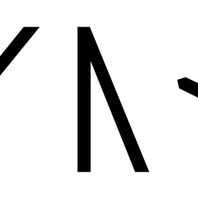
Viking Names
Asmund
Ásmundr is a very common name in Scandinavia throughout the Viking Age and later. It is recorded in medieval documents from both Lincolnshire and Yorkshire, in field-names in Lincolnshire, and in major names in North and West Yorkshire such as Osmotherley and Osmondthorpe. It is an Old Norse compound name. Its first element Ás- ‘a god’, frequent in Viking Age names, presumably refers to Old Norse deities such as Odin and Thor, though the latter name appears in its own right in many names, both male and female, while Odin is a very rare element in personal names. The second element-mundr is either Old West Norse ‘protector’ or Old Norse-Icelandic ‘gift’.
Read More
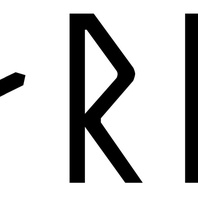
Viking Names
Gerd
The name Gerðr was found in Iceland in the tenth century, but only possibly found in Norway in place-names. It is also found in one Danish place-name. It is is the first element in the place-name Garriston, North Yorkshire and in Getheston, a field name, in Monk Bretton, West Yorkshire. Gerðr is from the Primitive Scandinavian garðiōʀ. Perhaps it is the female equivalent of the Old Norse male personal name Garðr from Old Norse garðr ‘yard, enclosure’, but used in the older sense of ‘protection’. Gerðr occasionally appears as a form of the male personal name, Giarðarr. Many female names, such as Þorgerðr are formed with -gerðr as the second element. Gerðr also appears in Old Norse mythology as the name of the giantess with whom the god Freyr falls in love.
Read More

Viking Names
Hjalp
Hjalp was recorded in West Scandinavia by the time of the settlement of Iceland (c. 870-930) and is found in a Swedish place-name. The name was originally a byname from Old Norse hjǫlp ‘help’. It is also the first element of the place-name Helperby, North Yorkshire. In the twelfth century, one of Earl Rǫgnvaldr of Orkney’s ships was called Hjalp, an early example of giving ships female names.
Read More

Viking Names
Hild
Hildr is a monothematic name derived from Old Norse hildr ‘battle’, and in Old Norse mythology it was the name of a valkyrie. It is common across Scandinavia and also a common second element in a number of female personal names such as the very common Gunnhildr, Ragnhildr, etc. The name is attested as the first element in Hinderskelfe, North Yorkshire, and in Hinderwell, North Yorkshire. Hinderwell may originally have contained the name of the English St Hild of Streanæshalch (Whitby), but preserved forms of the place-name show Scandinavian grammar in the use of the genitive singular Hildar. This form is also seen in a lost field-name in Brocklesby, Lincolnshire.
Read More
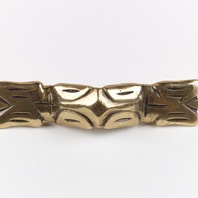
Viking Objects
Reproduction Ansate Brooch
A reproduction, copper alloy, ansate brooch based on an example from York. Two copper alloy examples of ansate brooches, also known as equal-armed brooches, were found at 16-22 Coppergate. These brooches are characterised by a narrow arched bow and terminal heads of identical form. The design of the brooches from Coppergate are a variant known as ‘caterpillar’ type. Asnate brooches are dated to between the seventh and ninth centuries though the finds at Coppergate may extend their popularity into the tenth century. The ‘caterpillar’ variety is typically geographically limited to areas bordering the North Sea. The quantity found in England, however, may indicate local manufacture. Brooches were a typical part of female dress. Scandinavian brooches came in a variety of sizes and shapes which included disc, trefoil, lozenge, equal-armed, and oval shapes. The different brooch types served a variety of functions in Scandinavian female dress with oval brooches typically being used as shoulder clasps for apron-type dresses and the rest being used to secure an outer garment to an inner shift. Anglo-Saxon brooches do not match this diversity of form with large disc brooches being typical of ninth century dress styles with smaller ones becoming more popular in the later ninth and tenth centuries. However, since disc brooches were used by both Anglo-Saxon and Scandinavian women they are distinguished by their morphology. Scandinavian brooches were typically domed with a hollow back while Anglo-Saxon brooches were usually flat. Moreover, Anglo-Saxon brooches were worn singly without accompanying accessories.
Read More
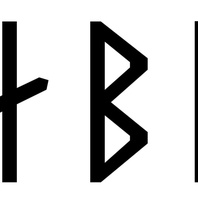
Viking Names
Api
Api is an original byname meaning ‘fool’. It is possibly found in the Norwegian place-name Apnes and there are a few instances in Old Danish, including perhaps, the runic forms abi and aba, although these forms may rather derive from Abbi or Æbbi. It is the first element in Apedale, North Yorkshire and Apethorpe, West Yorkshire.
Read More

Viking Names
Ingus
Ingus is possibly an Anglo-Scandinavian formation because it is not attested in Scandinavia and perhaps only survives in the place-name Ings Beck, North Yorkshire. In the twelfth century the place-name was recorded as Ingusbec. The name is possibly a short form of the Old Norse female name Ingiríðr.
